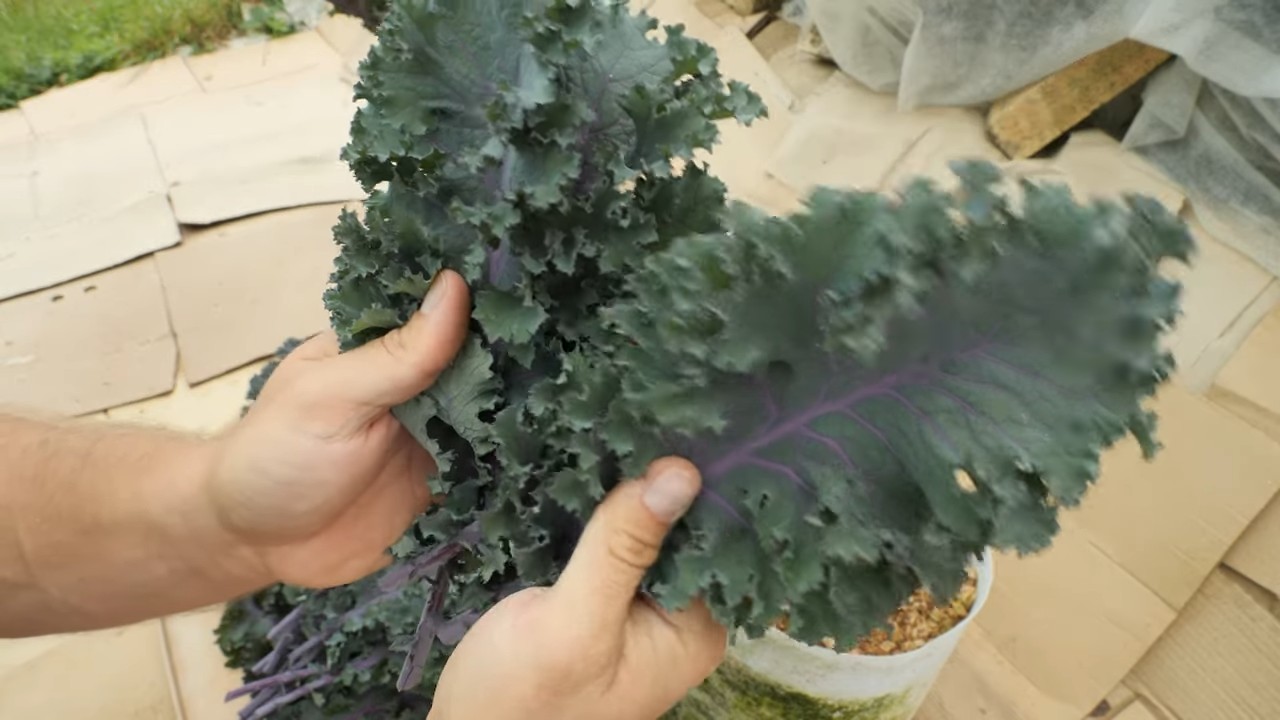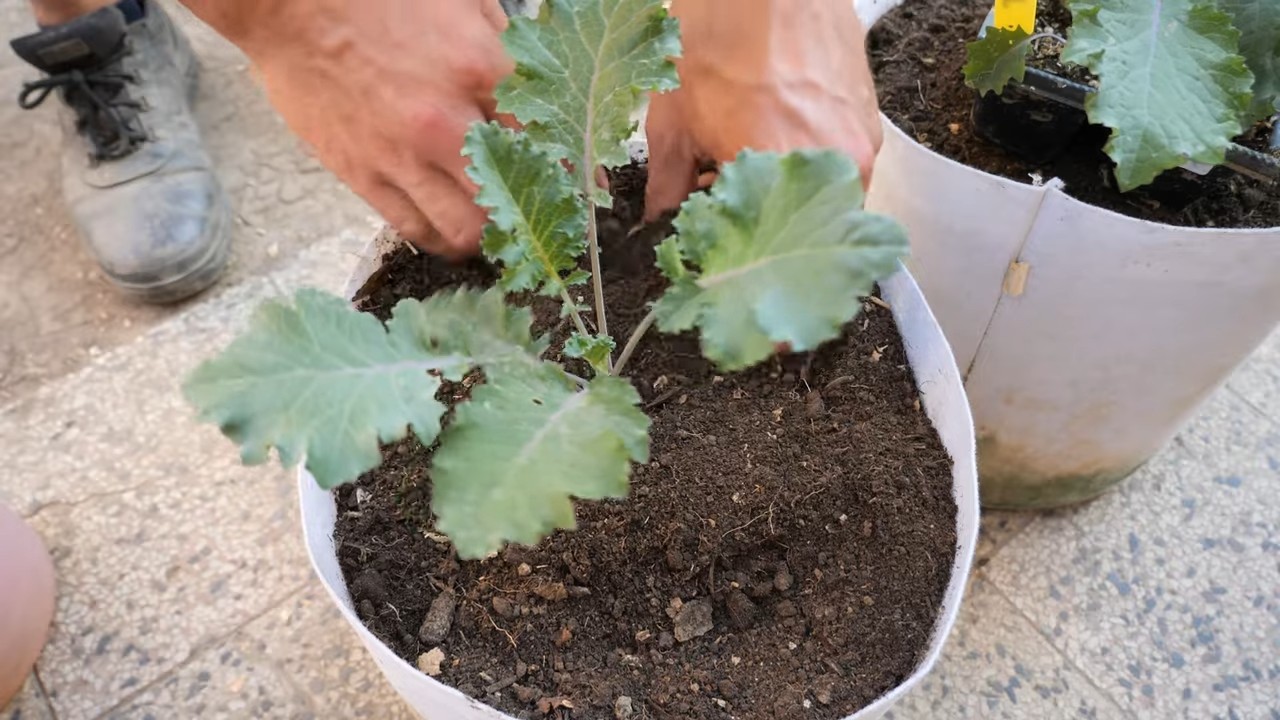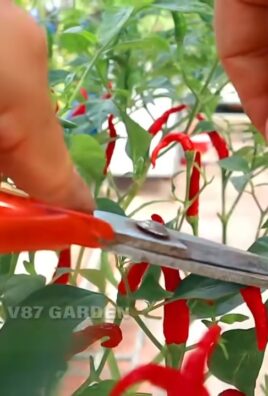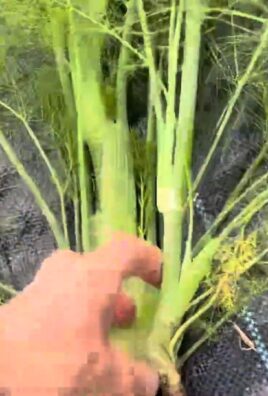Growing Kale in Containers: Unlock the secrets to a thriving, leafy green garden, even without a sprawling backyard! Have you ever dreamed of snipping fresh, vitamin-packed kale right outside your kitchen door? I know I have! This DIY guide will empower you to cultivate your own vibrant kale crop, regardless of your space constraints.
Kale, a nutritional powerhouse, boasts a rich history dating back to ancient Greece and Rome, where it was a staple food. Over centuries, it has spread across the globe, becoming a beloved ingredient in diverse cuisines. But let’s face it, not everyone has the luxury of a traditional garden to grow this leafy goodness. That’s where container gardening comes in!
In today’s fast-paced world, access to fresh, healthy produce is more important than ever. Growing your own kale in containers offers a fantastic solution. It’s not only a cost-effective way to enjoy organic greens, but it’s also incredibly rewarding. Imagine the satisfaction of harvesting your own kale for salads, smoothies, or even kale chips! Plus, it’s a fantastic way to connect with nature and de-stress. This DIY guide will provide you with easy-to-follow steps and expert tips to ensure your success in growing kale in containers, transforming your balcony, patio, or even a sunny windowsill into a flourishing mini-farm.

Growing Kale in Containers: A Beginner’s Guide
Hey there, fellow gardening enthusiasts! I’m so excited to share my experience with growing kale in containers. It’s surprisingly easy, even if you don’t have a huge backyard. Fresh, homegrown kale is incredibly rewarding, and trust me, the taste is far superior to anything you’ll find in the grocery store. Let’s dive in!
Choosing the Right Container and Soil
Before we even think about seeds, we need to get the foundation right. The container and soil are crucial for healthy kale growth.
* Container Size: Kale needs room to grow, so opt for a container that’s at least 12 inches in diameter and 12 inches deep. Bigger is generally better, as it allows for more root development and better water retention. I personally prefer using 5-gallon buckets – they’re readily available and provide ample space.
* Drainage: This is non-negotiable! Make sure your container has drainage holes. Kale hates sitting in soggy soil, which can lead to root rot. If your container doesn’t have holes, you’ll need to drill some.
* Soil: Forget garden soil! It’s too heavy and compacts easily in containers. Instead, use a high-quality potting mix. Look for a mix that’s well-draining and contains ingredients like peat moss, perlite, and vermiculite. I often amend my potting mix with compost for added nutrients.
Planting Your Kale
Now for the fun part – getting those kale seeds or seedlings into the soil!
* Starting from Seeds vs. Seedlings: You can start kale from seeds or buy seedlings from a nursery. Starting from seeds is more economical, but it takes longer. Seedlings give you a head start. I’ve done both, and honestly, both methods work well.
* When to Plant: Kale is a cool-season crop, meaning it thrives in cooler temperatures. The best time to plant is in early spring or late summer/early fall. Avoid planting during the hottest months of summer, as the heat can cause the kale to bolt (go to seed), making the leaves bitter.
* Planting Seeds:
1. Fill your container with potting mix, leaving about an inch of space at the top.
2. Moisten the soil thoroughly.
3. Sow the seeds about 1/4 to 1/2 inch deep and 1 inch apart.
4. Gently cover the seeds with soil.
5. Water lightly.
6. Keep the soil consistently moist until the seeds germinate, which usually takes about 5-10 days.
* Planting Seedlings:
1. Dig a hole in the potting mix that’s large enough to accommodate the seedling’s root ball.
2. Gently remove the seedling from its container.
3. Loosen the roots slightly.
4. Place the seedling in the hole and backfill with potting mix.
5. Water thoroughly.
6. Space seedlings about 12 inches apart in the container.
Caring for Your Kale
Once your kale is planted, it’s time to provide it with the care it needs to flourish.
* Watering: Kale needs consistent moisture, but avoid overwatering. Water when the top inch of soil feels dry to the touch. During hot weather, you may need to water more frequently.
* Sunlight: Kale needs at least 6 hours of sunlight per day. If you don’t have a sunny spot, you can supplement with grow lights.
* Fertilizing: Kale is a heavy feeder, so it needs regular fertilization. Use a balanced fertilizer (e.g., 10-10-10) every 2-3 weeks. You can also use organic fertilizers like compost tea or fish emulsion. I personally love using compost tea – it’s easy to make and provides a gentle boost of nutrients.
* Pest Control: Kale can be susceptible to pests like aphids, cabbage worms, and flea beetles. Regularly inspect your plants for signs of infestation.
* Aphids: These tiny insects suck the sap from leaves. You can control them by spraying them with a strong stream of water or using insecticidal soap.
* Cabbage Worms: These green caterpillars can devour your kale leaves. Handpick them off the plants or use Bacillus thuringiensis (Bt), a natural insecticide.
* Flea Beetles: These tiny beetles chew small holes in the leaves. Cover your plants with row covers to prevent them from reaching the kale. You can also use diatomaceous earth, a natural insecticide.
* Weeding: Keep your container free of weeds, as they can compete with your kale for nutrients and water.
* Mulching: Add a layer of mulch around your kale plants to help retain moisture, suppress weeds, and regulate soil temperature. Straw, wood chips, or shredded leaves work well.
Harvesting Your Kale
The best part – reaping the rewards of your hard work!
* When to Harvest: You can start harvesting kale leaves when they are about 4-6 inches long.
* How to Harvest: Harvest the outer leaves first, leaving the inner leaves to continue growing. This is called “cut-and-come-again” harvesting, and it allows you to harvest kale continuously for several weeks.
* Harvesting Technique: Use a sharp knife or scissors to cut the leaves off at the base of the stem.
* Storage: Freshly harvested kale can be stored in the refrigerator for up to a week. Wrap the leaves in a damp paper towel and place them in a plastic bag.
Troubleshooting
Even with the best care, you might encounter some problems along the way. Here are a few common issues and how to address them:
* Yellowing Leaves: This can be caused by overwatering, underwatering, nutrient deficiencies, or pests. Check the soil moisture and adjust your watering accordingly. Fertilize your kale with a balanced fertilizer. Inspect your plants for pests and treat them as needed.
* Bolting: This happens when kale is exposed to high temperatures. The plant will start to produce flowers and the leaves will become bitter. To prevent bolting, plant kale in early spring or late summer/early fall. Provide shade during the hottest part of the day.
* Leggy Growth: This means your kale isn’t getting enough sunlight. Move your container to a sunnier location or supplement with grow lights.
* Slow Growth: This can be caused by nutrient deficiencies, poor soil, or pests. Fertilize your kale with a balanced fertilizer. Amend your soil with compost. Inspect your plants for pests and treat them as needed.
Choosing Kale Varieties
There are so many different types of kale to choose from! Here are a few of my favorites:
* Lacinato (Dinosaur) Kale: This variety has dark green, bumpy leaves and a slightly nutty flavor. It’s my personal favorite!
* Curly Kale: This is the most common type of kale. It has curly, frilly leaves and a slightly bitter flavor.
* Red Russian Kale: This variety has flat, fringed leaves with a reddish-purple hue. It has a milder flavor than curly kale.
* Redbor Kale: This variety has deeply ruffled, purple leaves. It’s very ornamental and adds a pop of color to your garden.
Extending the Growing Season
Want to enjoy fresh kale for even longer? Here are a few tips for extending the growing season:
* Cold Frames: A cold frame is a simple structure that protects plants from frost and cold temperatures. You can build your own cold frame or buy one from a garden center.
* Row Covers: Row covers are lightweight fabrics that protect plants from frost, pests, and wind.
* Succession Planting: Plant kale seeds or seedlings every few weeks to ensure a continuous harvest.
Enjoying Your Harvest
Now that you’ve harvested your kale, it’s time to enjoy it! Kale is incredibly versatile and can be used in a variety of dishes.
* Salads: Massage kale leaves with olive oil and lemon juice to make them more tender. Add your favorite toppings, such as nuts, seeds, dried fruit, and cheese.
* Smoothies: Add a handful of kale to your favorite smoothie recipe for a boost of nutrients.
* Soups and Stews: Kale adds a hearty flavor and texture to soups and stews.
* Sautéed Kale: Sauté kale with garlic, olive oil, and a pinch of salt for a simple and delicious side dish.
* Kale Chips: Toss kale leaves with olive oil and salt, then bake them in the oven until crispy.
Growing kale in containers is a rewarding experience that anyone can enjoy. With a little bit of care and attention, you can have a steady supply of fresh, homegrown kale right at your fingertips. Happy gardening!

Conclusion
So, there you have it! Growing kale in containers isn’t just a possibility; it’s a pathway to fresh, nutritious greens right at your fingertips. We’ve explored the simple steps, from selecting the right container and soil to nurturing your kale plants to their full potential. But why is this DIY trick a must-try?
Firstly, it’s about accessibility. Whether you have a sprawling garden or a tiny balcony, container gardening democratizes the ability to grow your own food. No longer are fresh, organic vegetables limited to those with ample land. You can cultivate a thriving kale patch even in the most urban environments.
Secondly, it’s about control. Container gardening allows you to meticulously manage the growing conditions. You can tailor the soil composition, water frequency, and sun exposure to perfectly suit your kale’s needs. This level of control translates to healthier, more productive plants. You can also easily move your containers to chase the sun or protect them from harsh weather.
Thirdly, it’s about sustainability. Growing your own kale reduces your reliance on store-bought produce, which often travels long distances and contributes to carbon emissions. Plus, you can avoid the use of harmful pesticides and herbicides, ensuring that your kale is truly organic and good for the planet.
But the beauty of container gardening lies in its adaptability. Feel free to experiment with different varieties of kale. Try the classic curly kale, the robust Lacinato (dinosaur) kale, or the vibrant Red Russian kale. Each variety offers a unique flavor and texture, adding diversity to your culinary creations.
Consider companion planting to enhance your kale’s growth and deter pests. Marigolds, nasturtiums, and garlic are excellent choices to plant alongside your kale in the same container or nearby. These companion plants not only add beauty to your container garden but also provide natural pest control and attract beneficial insects.
For those with limited space, vertical gardening is a fantastic option. Use stacked planters or hanging baskets to maximize your growing area and create a stunning visual display. You can even repurpose old pallets or plastic bottles to create unique and eco-friendly vertical gardens.
And don’t forget about succession planting. Plant new kale seedlings every few weeks to ensure a continuous harvest throughout the growing season. This way, you’ll always have a fresh supply of kale on hand for salads, smoothies, soups, and more.
Growing kale in containers is more than just a gardening project; it’s an investment in your health, your well-being, and the environment. It’s a rewarding experience that connects you to the natural world and empowers you to take control of your food supply.
So, what are you waiting for? Grab a container, some soil, and a few kale seedlings, and embark on your own container gardening adventure. We encourage you to try this DIY trick and discover the joy of growing your own fresh, delicious kale. And most importantly, share your experiences with us! We’d love to hear about your successes, your challenges, and your creative variations. Let’s build a community of container gardening enthusiasts and inspire others to embrace the power of homegrown food. Share your photos and tips on social media using #ContainerKale and let’s grow together!
Frequently Asked Questions (FAQ)
What is the best size container for growing kale?
The ideal container size for growing kale is at least 12 inches in diameter and 12 inches deep. This provides enough space for the kale’s root system to develop properly. However, larger containers (15-18 inches) are even better, especially if you plan to grow multiple kale plants in the same container. A larger container also retains moisture better, reducing the frequency of watering. Remember to choose a container with drainage holes to prevent waterlogging, which can lead to root rot.
What type of soil is best for growing kale in containers?
Kale thrives in well-draining, nutrient-rich soil. A good potting mix specifically formulated for vegetables is an excellent choice. You can also create your own potting mix by combining equal parts of compost, peat moss (or coconut coir), and perlite or vermiculite. Compost provides essential nutrients, peat moss (or coconut coir) helps retain moisture, and perlite or vermiculite improves drainage and aeration. Avoid using garden soil in containers, as it can become compacted and hinder root growth.
How much sunlight does kale need when grown in containers?
Kale requires at least 6 hours of direct sunlight per day to grow well. Choose a location for your container garden that receives ample sunlight. If you live in a hot climate, provide some afternoon shade to prevent the leaves from scorching. If you don’t have enough natural sunlight, you can supplement with grow lights. Position the grow lights about 6-12 inches above the kale plants and keep them on for 12-14 hours per day.
How often should I water my kale plants in containers?
Water your kale plants regularly, especially during hot and dry weather. The soil should be consistently moist but not waterlogged. Check the soil moisture by sticking your finger about an inch deep into the soil. If it feels dry, it’s time to water. Water deeply, until water drains out of the drainage holes. Avoid overhead watering, as it can promote fungal diseases. Instead, water at the base of the plant.
How do I fertilize kale grown in containers?
Kale is a heavy feeder and requires regular fertilization to thrive. Use a balanced organic fertilizer, such as a 10-10-10 or 5-5-5, every 2-3 weeks. You can also use a liquid fertilizer, such as fish emulsion or seaweed extract, diluted according to the package instructions. Apply the fertilizer after watering to prevent root burn. Compost tea is another excellent option for fertilizing kale. Simply steep a bag of compost in water for a few days and then use the resulting liquid to water your plants.
What are some common pests and diseases that affect kale, and how can I prevent them?
Common pests that affect kale include aphids, cabbage worms, and flea beetles. To prevent pest infestations, inspect your plants regularly and remove any pests you find by hand. You can also use insecticidal soap or neem oil to control pests. Row covers can also be used to protect your kale plants from pests. Common diseases that affect kale include powdery mildew and black rot. To prevent diseases, ensure good air circulation around your plants and avoid overhead watering. Remove any infected leaves promptly.
Can I grow kale indoors in containers?
Yes, you can grow kale indoors in containers, but you’ll need to provide adequate light. Place your kale plants near a sunny window that receives at least 6 hours of direct sunlight per day. If you don’t have enough natural sunlight, you’ll need to supplement with grow lights. Use full-spectrum grow lights and keep them on for 12-14 hours per day. Also, ensure good air circulation around your plants to prevent fungal diseases.
How do I harvest kale from containers?
You can start harvesting kale leaves when they are about 4-6 inches long. Harvest the outer leaves first, leaving the inner leaves to continue growing. This will encourage the plant to produce more leaves. You can harvest kale leaves throughout the growing season. Simply cut the leaves off at the base of the stem with a sharp knife or scissors.
Can I grow kale in containers during the winter?
Yes, you can grow kale in containers during the winter, especially in mild climates. Kale is a cold-hardy vegetable and can tolerate temperatures down to 20°F (-7°C). In colder climates, you can protect your kale plants by moving them indoors or covering them with a frost blanket. Even in winter, kale needs sunlight, so ensure it gets adequate light.
What are some creative ways to use kale grown in containers?
The possibilities are endless! You can use your homegrown kale in salads, smoothies, soups, stews, stir-fries, and more. You can also bake kale chips for a healthy and delicious snack. Kale can also be added to omelets, frittatas, and quiches. Don’t be afraid to experiment and discover new ways to enjoy your fresh, homegrown kale. You can even use kale as a garnish for your dishes.




Leave a Comment